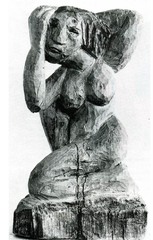Exam Practice 1
Every image: Artist, title, date
Ability to reference readings so far
Use of terms.
Manet’s Olympia, 1863.
3 ways challenging tradition:
- Subject matter: lower class, traditionally a goddess
- Visual brushstrokes, traditionally not visual
- Direct gaze, traditionally more passive
Stonebreaker
3 ways engages with aspects of contemporary life
- Technique. Painted thickly with hands to grasp the texture of the landscape
- Lower subject not normally represented in the academy.
Cezanne,
3 ways challenges traditional methods of constructing space
- Framing of the pine tree in the foreground, choice of cropping image, consciously placed
- Shifting between 2D and 3D – Passage.
Civil war piece vs The Slave Ship
- Realism in American, Romanticism in England
- Both focus on the power of nature, invitation to possibility, very dangerous
- Landscape paintings
- 2 different places at the same era
- Picturesque and sublime, sublime
- colder colours, warmer colours
Arts & Crafts Movement + Art Nouveau
Louis Comfort Tiffany
Table Lamp, 1904-15, bronze and Favrile glass
- Floral but stylised. Abstraction of natural form.
- Intended for wealthy buyers. Workshop only able to make one or so at a time.
- Ensured high quality and craftsmanship
- Favrile glass – lustrous, high quality, invented by him. Add colour through control but random staining happens. Easier to purify.
- Flowers, leaves, waterlilies climbing up on vine like shape at base.
Table Lamp, c 1900, bronze and Favrile
- Casade of flowers and leaf-like shapes
- Trunk detail and roots
Fauvism
-Use colour to render all pictorial elements in a scene.
Matisse
Woman with a Hat, 1905
- One of 10 works, maximum number, to be shown for the autumn salon. Started in 1903. Alternative venue. Contrast to Academy.
- Traditional subject matter painted in radical way. Dramatic use of colour.
- Half length portrait of his wife.
- Body facing away from viewer but facing.
- Vigorous brushstrokes and colour.
- Hat takes up 1/3 of the canvas. Fashionable image. Ribbons, bows, flowers, feathers used to decorate.
- Yellow in contrast to teals for highlights and shadows
- Thinner paint for her hair, canvas is partially visible.
- Invented movements with loaded paintbrush
- Places complementary colours next to each other. Purosefully to catch your eyes.
- Lighter colours represent an ambiguous background. Pushes the subject forward.
- President of Salon tried to persuade Matisse from showing it “excessively modern”
- Not blended or mixed like an academic painting
Le Bonheur de Vivre (The Joy of Life), 1905-6
- Produced several sketches for it
- loosely based vision on sketches for final work
- Balances innovative use of colour with subject matter
- Scale is not consistent
- Traditional sense of narrative is not present
- Colour and similar forms to unity figures
- conveys fore, middle, and background through: colour saturated more in foreground. Clear horizon separates background. yellows and lavenders unify.
- middle figures pulsate.
- Minimalist representation of forms
- First shown at the Salon des Independent. Greeted with uproar of cheers, angry babble and screaming laughter.
German Expressionism
Der Blaue Reiter (The Blue Rider)
Die Brücke (The Bridge)
- Challenges the academy in Germany
- Not interested in imitating nature, interested in inventing something that shows the immediacy of their perspective.
- Primitive. Looking to Africa, Asia, Russia for inspiration, materials.
Der Blaue Reiter
- German and Russian artists working in Germany. 1911 – 1914.
Kandinsky, Composition IV, 1911
- “Concerning the Spiritual in Art”: Psychology power of colour and music.
- Nothing depicted from everyday life. Subject matter
- Warm and cool colours. Blue – infinity, sky, purity. Yellow – acid taste of lemon, earth
- Initally sketched from natural world which is then abstracted





























